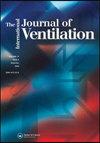Tracing indoor contaminant release location based on local mean residual-life-time of air
IF 1.5
4区 工程技术
Q3 CONSTRUCTION & BUILDING TECHNOLOGY
引用次数: 1
Abstract
Abstract Even in case ventilation system is operating in optimal fashion, indoor air quality could be varied depending on the indoor contaminant release occasions. Thus, accurate and rapid identification of contaminant source locations in indoor environment is critical for occupants’ health as well as building safety and integrity. This study presented a novel method to locate indoor contaminant source using local mean residual-life-time (LMR). Based on the theoretical definition of LMR, a characteristic quantitative relationship between the LMR at source location and the contaminant concentration profile of a room was derived and assessed through two stages of studies: experimental and numerical explorations. In the experiments, by changing contaminant release location under limited condition, the LMR at the source location and the contaminant concentration profile of a test chamber were measured. Then, the outcomes were examined to verify whether the derived equation was established in the chamber. Computational Fluid Dynamics (CFD) technique was also used to make up for the experimental limitations. CFD simulations were carried out to analyze the validity of the equation in response to different release locations of the contaminant in a more complex physical environment by obtaining high-resolution information. Both experimental and numerical results showed that the presented equation was well established and could be used to locate indoor contaminant source even in non-ideal situation or in complicated spaces.基于局部空气平均剩余寿命的室内污染物释放位置追踪
摘要:即使通风系统以最佳方式运行,室内空气质量也可能因室内污染物释放场合而变化。因此,准确和快速地识别室内环境中的污染源位置对居住者的健康以及建筑的安全和完整性至关重要。提出了一种利用局部平均剩余寿命(LMR)定位室内污染源的新方法。基于LMR的理论定义,通过实验和数值探索两个阶段的研究,推导出了源位置LMR与房间污染物浓度分布之间的特征定量关系。在实验中,通过在限定条件下改变污染物的释放位置,测量了源位置的LMR和试验室的污染物浓度分布。然后,对结果进行检验,以验证导出的方程在实验室内是否成立。计算流体力学(CFD)技术也被用于弥补实验的局限性。通过CFD模拟,获得高分辨率信息,分析该方程在更复杂物理环境中不同污染物释放位置下的有效性。实验和数值结果表明,该方程建立良好,即使在非理想情况或复杂空间中,也可用于室内污染源的定位。
本文章由计算机程序翻译,如有差异,请以英文原文为准。
求助全文
约1分钟内获得全文
求助全文
来源期刊

International Journal of Ventilation
CONSTRUCTION & BUILDING TECHNOLOGY-ENERGY & FUELS
CiteScore
3.50
自引率
6.70%
发文量
7
审稿时长
>12 weeks
期刊介绍:
This is a peer reviewed journal aimed at providing the latest information on research and application.
Topics include:
• New ideas concerned with the development or application of ventilation;
• Validated case studies demonstrating the performance of ventilation strategies;
• Information on needs and solutions for specific building types including: offices, dwellings, schools, hospitals, parking garages, urban buildings and recreational buildings etc;
• Developments in numerical methods;
• Measurement techniques;
• Related issues in which the impact of ventilation plays an important role (e.g. the interaction of ventilation with air quality, health and comfort);
• Energy issues related to ventilation (e.g. low energy systems, ventilation heating and cooling loss);
• Driving forces (weather data, fan performance etc).
 求助内容:
求助内容: 应助结果提醒方式:
应助结果提醒方式:


